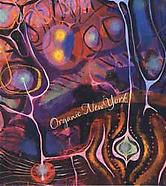“Hare stands second to no sculptor of his generation, unless it be David Smith, in potential talent.”[1]
A self-taught, acclaimed sculptor, David Hare initially made a name for himself as a photographer. Hare was born in New York City in 1917 to parents who supported the arts. His mother, Elizabeth Sage Goodwin, was not only an art collector, but also a backer of the 1913 Armory Show and a friend of prominent twentieth century artists including Constantin Brancusi, Marcel Duchamp, and Walt Kuhn. The family moved to New Mexico in the 1920s, but in the 1930s, Hare returned to the east coast, studying biology and chemistry at Bard College before becoming a professional photographer. Hare settled in Roxbury, Connecticut, where he met Alexander Calder and Arshile Gorky as well as Yves Tanguy, who had married Hare’s cousin.
While photography provided Hare an entry into visual culture, he became increasingly interested in other media, particularly sculpture. In the 1940s, Hare developed close relationships with the European surrealists who had fled Nazism for New York. He edited André Breton’s surrealist magazine VVV from 1941 to 1944, and he also wrote criticism for various literary journals and magazines. In the early 1940s, Hare taught himself to make sculpture, experimenting with materials as diverse as stone, cast bronze, plaster, and wire. His works were soon widely exhibited at such prominent venues as the Samuel Kootz Gallery, the Levy Gallery, and Art of This Century. In 1948, he co-founded the Subjects of the Artist School, together with William Baziotes, Robert Motherwell, and Mark Rothko. According to Clyfford Still, the school was intended to be an informal gathering space for artists to think and work. Although the school closed in 1949, it was a precursor for the Eighth Street Club.












